Clinical Exchange in Japan
Welcome to Japan and Nagoya University school of Medicine!
Experience Stories in Nagoya Univ. School of Medicine
Mr. Lin from Taiwan
Feedback for Respiratory and Infectious Department
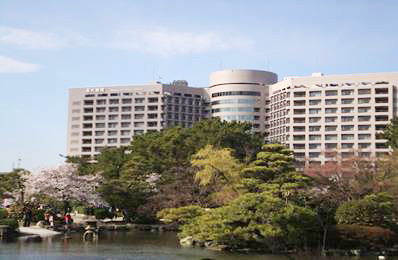 Respiratory and infectious department are the first course that my friend and I choose. Before we started the course, I was very worried about the language problem. To my surprise, many teachers were willing to explain or teach in English. It really helped a lot and made our communication more easily.
Respiratory and infectious department are the first course that my friend and I choose. Before we started the course, I was very worried about the language problem. To my surprise, many teachers were willing to explain or teach in English. It really helped a lot and made our communication more easily.
In respiratory department, we learned about the treatment procession of lung cancer in Japan. In Taiwan, the first choice to identify the character of lung tumor is CT-guided biopsy. Only if the tumor which is near hilum or invades bronchus will we choose bronchoscope for cell collection or biopsy. However, for fear of enhancing tumor seeding rate, the preferred choice is EBUS biopsy in Japan. It was exciting to discover that not only C-EBUS, but also P-EBUS are used here. We were lucky enough to have the chance watching these two procedures. Another interesting difference is that in Taiwan, we only test EGFR mutation when it is stage III or IV adenocarcinoma; on the contrary, in Japan simply all stages of adenocarcinoma or squamous carcinoma. The fact may show that the medical resources in Japan are still far ahead than Taiwan.
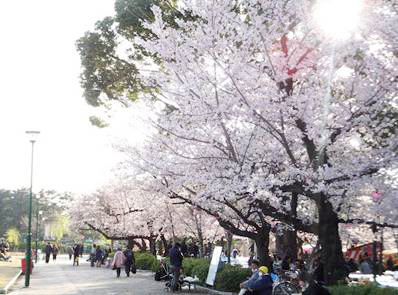 On the other hand, infectious department gave us plenty of cases to practice our knowledge of antibiotics and microorganism. The most impressive case is a pyeometritis case which developed vancomycin induced fever at last. The case also reminds us with the four possibilities of recurrent fever in infectious department: 1. other infectious focus; 2. resistant bacteria infection; 3. drug fever; 4. nosocomial infection. Also, sometimes deep vein thrombosis and central fever would be the reason for the pyrexia.
On the other hand, infectious department gave us plenty of cases to practice our knowledge of antibiotics and microorganism. The most impressive case is a pyeometritis case which developed vancomycin induced fever at last. The case also reminds us with the four possibilities of recurrent fever in infectious department: 1. other infectious focus; 2. resistant bacteria infection; 3. drug fever; 4. nosocomial infection. Also, sometimes deep vein thrombosis and central fever would be the reason for the pyrexia.
The patients in the infectious department are quite different from our hospital, National Taiwan University Hospital. In our hospital, the infectious department has its own ward and deals with rare cases of infection, such as fungal infections or some MAC infections. Its function also covers consultation mostly from hematology or oncology department to treat immunocompromised and poor renal function patients. In Nagoya City University Hospital, fungal infections are rarely seen, not to mention MAC infection. However, the function of infectious department here still plays a major role in controlling nosocomial infection and consultations by other departments.
Thanks for the two departments to give us the substantial training and the high quality lecture.
Feedback for Geriatrics
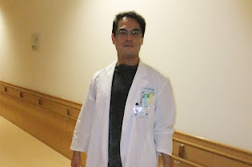 Unlike the previous course, geriatrics department dispatched each of us one patient to take care of. If we had any questions, we could discuss with the resident or specialist who was in charge of this patient. My supervisor was Dr. Hirose, as you can see in the right photo.
Unlike the previous course, geriatrics department dispatched each of us one patient to take care of. If we had any questions, we could discuss with the resident or specialist who was in charge of this patient. My supervisor was Dr. Hirose, as you can see in the right photo.
Dr. Hirose was a doctor with patience and hospitality. Because I couldn’t speak Japanese well, he would do his efforts speaking English as we discussed about the case. In such a discussion, he always threw me a question, and then I gave him an answer or my opinion. If it matched his knowledge, he would admire me. However, if there was some problem of my thinking process, he would frown and said “Is it right?” In this way, we had great time exchanging our thought about the treatment plan and differential diagnosis.
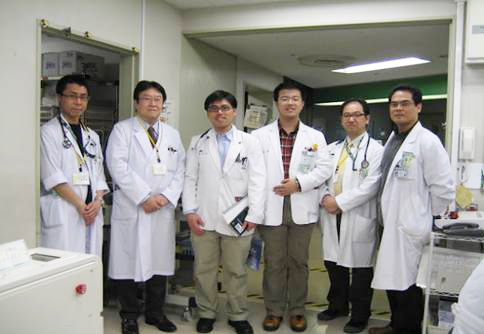 My designed case was an elderly male with diarrhea, which resulted in his dehydration status when he was sent into the hospital. At first, the patient’s family told us that he had taken magnesium for a few days, so we thought it might cause by this drug. However, after our observation, stopping this drug turn out disappointed result. Then it was a long way finding out the real cause. We’ve thought about bacterial colitis, IBD, IBS, and drug-induced diarrhea. In this period of time, I also got a good chance to practice my knowledge and thinking process. I happened to discovered that medical training was just like a detective game; you had to grab all the clues and drew an appropriate conclusion. Sadly, before I left the course, we hadn’t found the true cause yet.
My designed case was an elderly male with diarrhea, which resulted in his dehydration status when he was sent into the hospital. At first, the patient’s family told us that he had taken magnesium for a few days, so we thought it might cause by this drug. However, after our observation, stopping this drug turn out disappointed result. Then it was a long way finding out the real cause. We’ve thought about bacterial colitis, IBD, IBS, and drug-induced diarrhea. In this period of time, I also got a good chance to practice my knowledge and thinking process. I happened to discovered that medical training was just like a detective game; you had to grab all the clues and drew an appropriate conclusion. Sadly, before I left the course, we hadn’t found the true cause yet.
In geriatrics department, we had to present in the morning meeting and the weekly conference on Tuesday. Also, we had to see and ask the patients for our duty. These really made me feel like I was one of the team members. Also, thanks for the nurses here, they were very enthusiastic and gave us much help in taking care of the patients. Thanks for Dr. Suzuki for his wonderful lectures and the touching story about the medical assistance for the tsunami. Thanks for all the professors and team members for that we worked as a family.
Feedback for Emergency Department
 I've always wished to receive emergency course training since my fifth grade. The most important reason is that emergency course let medical students practice clinical knowledge in a limited time. In other words, you have to react reflectively. In such way, you correct your first impression and organize your thinking process immediately. This process would also play a special role no matter which course you choose in the future.
I've always wished to receive emergency course training since my fifth grade. The most important reason is that emergency course let medical students practice clinical knowledge in a limited time. In other words, you have to react reflectively. In such way, you correct your first impression and organize your thinking process immediately. This process would also play a special role no matter which course you choose in the future.
To my surprise, the emergency department in Japan is quite different from Taiwan. The hierarchy of medical service structure is much organized in this place. Thus, the patient number seems less than average emergency department in Taiwan. It was also a good news for us beginner, for we can take more time to think about the case thoroughly. The doctors here were all very willing to teach us or guide us through the whole case. The most impressive case was an adolescent girl with dissociative disorder lost her consciousness all of a sudden. Upon her arrival, her consciousness level was E1M1V1. However, we saw that her muscle tone was kind of preserved when the doctor dropped her arm. The conclusion of mine met with professor Zhang, a doctor from Peiking. However, there were still some investigations needed to unveil the mystery.
Emergency ICU is also a fundamental region to emergency department. The cases here were more complicated and delicate. Thanks for the hard working doctors here. They had to not only care about their duty, but also us bothersome students. Tacotsubo cardiomyopathy was one of the interesting cases we encountered. I’ve heard it once in the CSI series, but never thought about seeing a real case. You can imagine how excited I was. Like other department, emergency ICU also had some conflicts in dealing with patients. An elderly female who suffered from aortic stenosis was too old for surgical treatment. However, according to the ACC/AHA guidelines, surgery is the only way efficient for treating the AS-induced heart failure. There was no “right or wrong” no matter which treatment was given. Sometimes the will of patients were more important than everything.
Although it was quite happy time learning in this kind of environment, there are still some suggestions I wanted to offer. If it could be, dispatching us to one of the doctors separately would be better for learning and discussing. I know it would be kind of difficult because the doctors have different shifts every day.
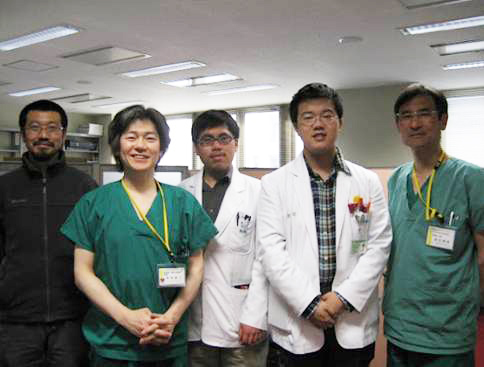 The last but not the least, thanks for the professors and doctors here not only for your lessons, but also for your hospitality. We really had a great time and got plenty of knowledge here.
The last but not the least, thanks for the professors and doctors here not only for your lessons, but also for your hospitality. We really had a great time and got plenty of knowledge here.
Click here to read other stories
Nagoya University Graduate School of Medicine